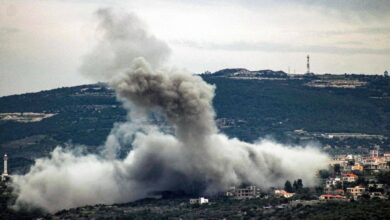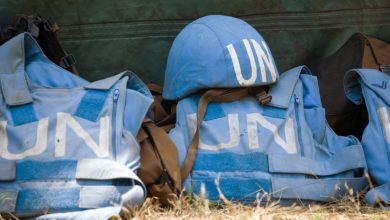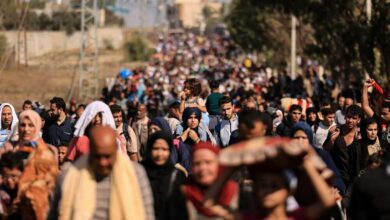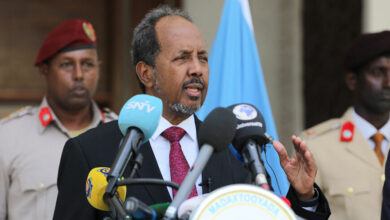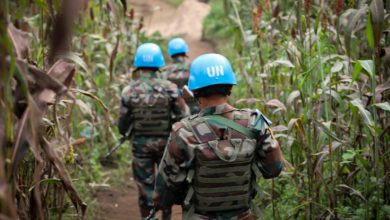The United Nations’ Minusca mission in Central African Republic on Wednesday, May 16 said it had retaken control of Bambari after institutions in the town were attacked in two days of violence and looting that left eight people dead.
“After the attacks, MINUSCA quickly re-established control of the town,” U.N. spokesperson Vladimir Monteiro said at a weekly press conference on Wednesday, according to a later release.
“Bambari has not fallen and we are not going to allow this town that symbolizes the return of the authority of the state fall into the hands of armed groups,” he added.
However, there were unconfirmed reports on Thursday of renewed fighting between militias in the town.
Police, gendarmes, NGOs attacked
On Tuesday, Radio Ndeke Luka reported that at least five people had been killed in Bambari in retaliation for the alleged killing of three members of the Peuhle community outside the town.
“[On Monday], a robbery on the Alindao axis caused the death of three people,” the mayor of Bambari, Abel Matchipata said. “In the afternoon, we began to listen to the crackling of weapons that have amplified in the night.”
In a Tuesday statement, Medecins Sans Frontieres (Doctors without Borders) said more than 300 people sought refuge in the hospital on Monday night. In a Thursday update, MSF said it had treated a total of 17 people, two of whom died, and that the 300 who initially sheltered in the hospital had left the town along with “a large portion” of Bambari’s residents.
According to Radio Ndeke Luka, the town hall, police station, gendarmerie, hospital and the local radio station were stormed by fighters.
RFI reported that three NGO facilities were looted and that at least six people were killed on Tuesday. A government spokesperson said one gendarme was killed and hundreds of people fled.
According to AFP, Bambari’s civil society coordinator on Wednesday said NGO bases and the Catholic parish of Saint-Jean were also attacked, while a U.N. pick-up vehicle was stolen by armed men who paraded it around the town.
Reporter Pacome Pabandji tweeted an image of a U.N.-marked pick-up full of men that he said were militia members in Bambari’s Bornou district on Tuesday. He said he had received the image from a Bambari resident, and that the men were members of the UPC group.
https://twitter.com/pacomepaba/status/996761607744249856
Responding to questions regarding Minusca inaction in Bambari, spokesperson Vladimir Monteiro “listed various phases of peacekeeper intervention” including protection of several hundred displaced people, as well as night patrols in sensitive areas, the Minusca release said.
“We are in control of this part of the country but it shows the challenges we face in Central Africa, with answers that MINUSCA has to provide on the ground and in the absence of state authority,” Monteiro said, reiterating that Minusca and the Central African forces are working together in Bambari.
UPC involvement?
According to RFI, heavily armed fighters entered Bambari and attacked and occupied the police station before moving to the gendarmerie. RFI said the men were from the Union for Peace in the Central African Republic (UPC), an ex-Seleka militia group led by Ali Darrass, but that a UPC spokesperson denied that its fighters had entered the town.
 The group is reportedly among other ex-Seleka militias that have been gathering in northern town of Kaga Bandoro since early April, threatening to move on the capital, Bangui. On Sunday, two French Mirage 2000-D fighter jets conducted a show of force in Kaga Bandoro, supporting the U.N. plan to deter the militias from heading south.
The group is reportedly among other ex-Seleka militias that have been gathering in northern town of Kaga Bandoro since early April, threatening to move on the capital, Bangui. On Sunday, two French Mirage 2000-D fighter jets conducted a show of force in Kaga Bandoro, supporting the U.N. plan to deter the militias from heading south.
Minusca spokesperson Vladimir Monteiro said that the mission will investigate the movements of members of armed groups in Bambari.
The release said armed individuals, including some alleged UPC members, attacked Minusca, the police and the Gendarmerie Nationale, following “rumors of murders” amid “community division.” It condemned attempts at “popular justice” as well as acts of reprisal and looting.
Citing an unnamed humanitarian source, RFI reported that the looters were not UPC members.
Bambari – which straddles several areas under the influence of various armed groups – had enjoyed a relative calm since the intervention of Minusca in early 2017 to oust the UPC.
The U.N. subsequently made Bambari a showcase for its intervention in CAR, arguing that the city was “without arms or armed groups” and inter-community initiatives have emerged in recent months.
However, Medecins Sans Frontieres says that nearly 39,000 displaced people still live in camps on either side of the river that divides Bambari and its communities. It says that the U.N.’s “unarmed city” initiative has only moved the problem towards Alindao, Ippy, and the Ndassima mining areas in the north.
Between January and April, MSF teams treated 113 people wounded in what it called “these war zones.”
Minusca forces in the area have also faced serious violence. On April 2, a temporary U.N. base in nearby Tagbara came under heavy attack from anti-balaka militia. One U.N. peacekeeper from Mauritania was killed and 11 others were wounded and more than 22 anti-balaka fighters were killed.
President Faustin Archange Touadera’s weak government controls around a fifth of the Central African Republic and relies heavily on Minusca for support. The rest is controlled by at least 14 different militia groups – the mainly Christian anti-Balaka in the southwest and mainly Muslim ex-Seleka in the northeast – who often fight each other for control of revenue from extortion, roadblocks or mineral resources.
UN operation to prevent militia moving toward Central African Republic capital continues




